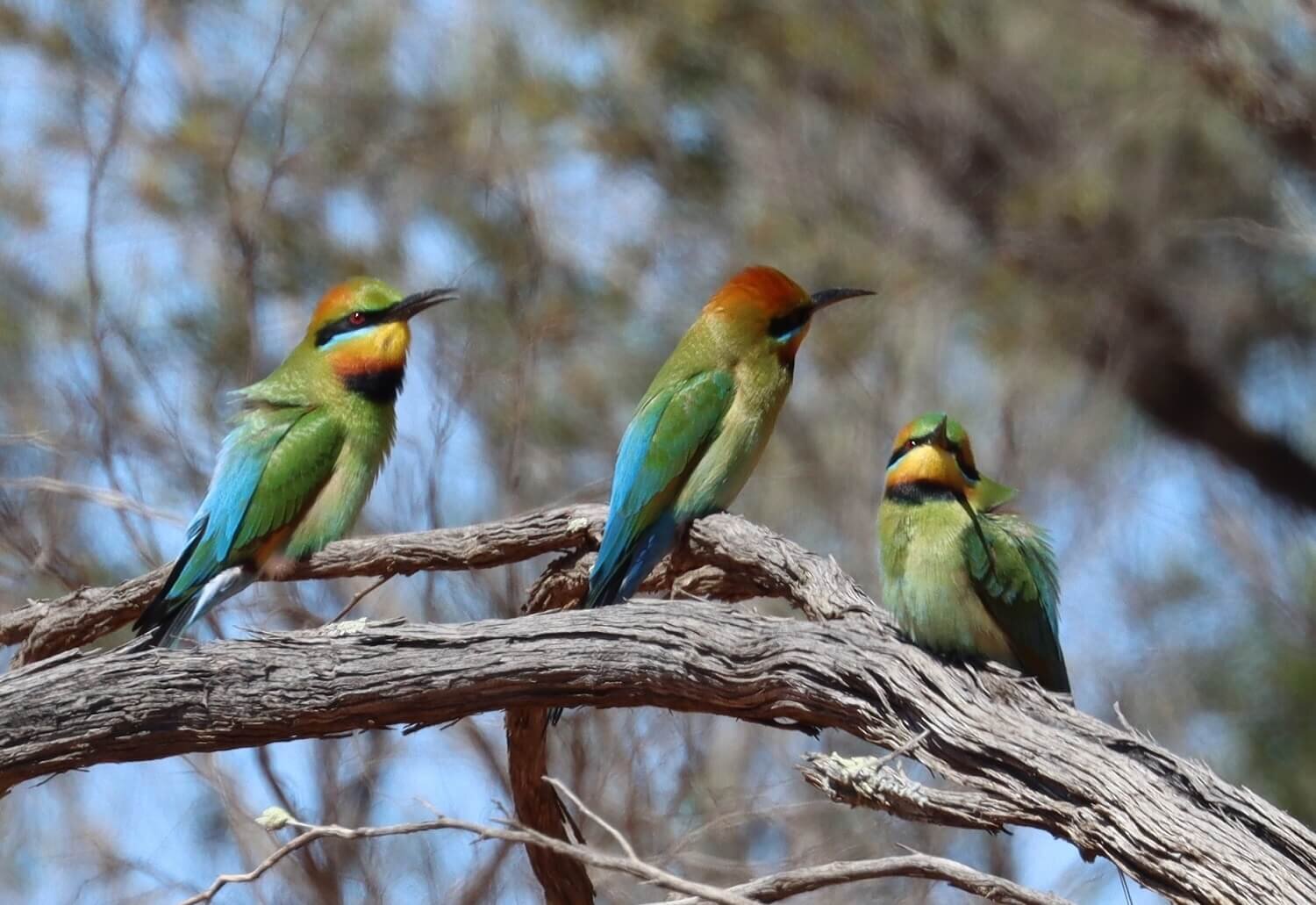Rainbow Bee-eaters and Dollarbirds
Rainbow Bee-eaters fly swiftly, catching bees and wasps on the wing. They then return to their exposed perches to bash the insects on a branch, removing the sting before eating it. I enjoy the bright plumage of this wonderful bird.
Rainbow Bee-eaters are widespread across Australia, but only visit the southern states in Summer. They move north in the winter, some as far as Indonesia and New Guinea. They arrive on Raakajlim in about October and stay for the Summer. We see them in groups of up to six, but they can form groups of up to 100 birds! Imagine that!
Their nests are excavated tunnels in sandy soil with a grass-lined chamber. Tunnels are about 90 cm long! Breeding in the southern states is from November to January and apparently they mate for life. We have a site on a neighboring property with exposed sandy cliffs which the Bee-eaters use. Sadly they didn’t nest there in 2020, so this is an old photo of a nesting burrow.
Rainbow Bee-eaters are not considered threatened but reporting rates have declined over the last ten years.
And this is a Dollarbird. Like Bee-eaters, Dollarbirds are migratory, spending the winter months in Indonesia and New Guinea. We haven’t seen a Dollarbird on Raakajlim, but they are so beautiful I had to include them. They have a white spot on their wing, like a silver dollar, which is visible when they fly.
Phil saw a Dollarbird in 2014; it was perched on a high, dead branch of a River Red Gum along the Murray River in Colignan. Every Spring since then we have had to drive slowly past the spot, peering up at the dead branches. It seemed a pointless exercise to me because there were never any Dollarbirds. I was starting to doubt they actually existed. This year was much the same until, right at the end of our window of opportunity, we took one last drive past “the spot”. And there it was, perched on a dead branch and calling in a loud water-fowl like chatter.
More information
Rainbow Bee-eaters - Australian Museum site
Dollarbirds and their call - https://www.graemechapman.com.au/library/viewphotos.php?c=655
Birdlife Australia - Rainbow Bee-eaters and Dollarbirds
First published December 15th 2020




